








Dr. Lolly Guerra, Executive Director
Jeannie Tomasek, Director of Programs & Membership
Chandelle Crane, Director of Marketing & Communications
Max Flores, President, Lubbock ISD
Al Rodriguez, President-Elect, Elgin ISD
Kimberly Rich, First Vice President, Dickinson ISD
Johjania Najera, Second Vice President, Keller ISD
Chris Halifax, Secretary, Abilene ISD
Martha Carrasco, Immediate Past President, Canutillo ISD
Brandon Chandler, District I, Gregory-Portland ISD
Dr. Tyrone Sylvester, District II, Goose Creek CISD
Dr. Tamey Williams-Hill, District III, Manor ISD
Theresa Burkhalter, District IV, Waxahachie ISD
Rick Rodriguez, District V, Lubbock ISD
Craig Lahrman, District VI, Ysleta ISD
Sharon Fuery, District I, Southside ISD
Brian Kroeger, District II, Splendora ISD
Bob Mabry, District III, Liberty Hill ISD
Jason Liewehr, District IV, Denton ISD
Heath Simpson, District V, Frenship ISD
Bobbi Russell-Garcia, District VI, Ysleta ISD
Kayla Vaughn, District I, Gregory-Portland
Barbara Ponder, District II, Barbers Hill ISD
Kris Reyes, District III, Pflugerville CISD
Dr. Loraine Marazzano, District IV, Grand Prairie ISD
Paul Kimbrough, District V, Canyon ISD
Jose Barraza, District VI, Canutillo ISD
Charity Salinas, District I, Southside ISD
Kelly Gabrisch, District II, Humble ISD
Sue Pfleging, District III, Waco ISD
Monica James, District IV, Waxahachie ISD
Paige TeBeest, District V, Amarillo ISD
Celina Stiles, District VI, Socorro ISD
**Includes President, President-Elect & District Representatives
Kayla Vaughn, District I, Gregory-Portland ISD
Dr. Nkrumah Dixon, District II, College Station ISD
Krista Marx, District III, Elgin ISD
Kendra Hancock, District IV, Dallas ISD
Staci Ashley, District V, Ector County ISD
Rosa Ramos, District VI, El Paso ISD
Melissa Aguero-Ramirez, District I, Pharr-San Juan-Alamo ISD
Cyndy Pullen, District II, Columbia-Brazoria ISD
Tammy Nobles, District III, Victoria ISD
Pamela Linton, District IV, Frisco ISD
Rhonda Dillard, District V, Frenship ISD
Jiovana Gutierrez, District VI, Ysleta ISD
her retirement. Our friend Lolly has gone above and beyond during this transition for the sake of TASPA. Lolly, thank you for your commitment to TASPA and for being a great friend.
We welcomed a new staff member to TASPA, Jeannie Tomasek, Director of Programs & Membership. Jeannie has fit right into the TASPA family and is successfully taking on every obstacle in her way. We are extremely grateful for Jeannie.
HIt looks like the Holiday Season is here, time really flies. It seems like just yesterday we were working to find creative new ways to fill in vacancies and spend ESSER funds. These and other factors have really made this year a challenge. Although it has felt difficult, I invite you to take a step back and reflect on the great things that have happened this year. Let us celebrate that we started school with kids and teachers back in classrooms. Let us celebrate that we have found creative ways to fill vacancies with limited resources from the State. Let us celebrate the opportunities we had to collaborate with colleagues to solve problems or brainstorm ideas. Let us celebrate that we have made it through this year of constant changes.
Speaking of celebrations and changes, I would like to share some of the great things that have happened at TASPA in 2022. TASPA saw our membership grow to over 1,000 members. Thank you to returning long time members, new members, TASPA Staff and those who have actively recruited members. This is a great milestone.
TASPA was privileged to work with Dr. Lolly Guerra as she gets ready to retire and enjoy time with family after a long successful career in education. Dr. Guerra announced her retirement a while back but has continued to help TASPA as we searched for an executive director. Although she had planned to leave earlier, the Board and I asked (or begged) Dr. Guerra to stick around a few weeks to help us with the transition of Executive Director. The weeks stretched into months and prolonged
The last major change for TASPA is the announcement of the new Executive Director, Chandelle Crane. Chandelle will continue the work of TASPA in providing informative workshops, professional development based on needs, and providing members with legislative information. Chandelle will continue our tradition of awesome relationships with sponsors and members. Congratulations Chandelle, the Board and I are excited for you.
These changes were major and were possible because of a great TASPA Board, staff, members, and sponsors. Please accept my sincere gratitude to you all!
As for me, it’s been a great run and I see many great things for TASPA in the future. I ask that we commit to staying informed and very active during the legislative 2023 session. This is important because there are State leaders out there that are not in favor of public schools and there are others who are just misinformed. Stay active with our voice so that our work is focused on providing a great public school experience for kids across Texas and not used for political gain. I am excited about the opportunity to see my TASPA family at the winter conference. Happy Holidays and thank you for the opportunity of serving as TASPA President.
Max is the 2022 TASPA President. He is the Executive Director of Human Resources in Lubbock ISD.
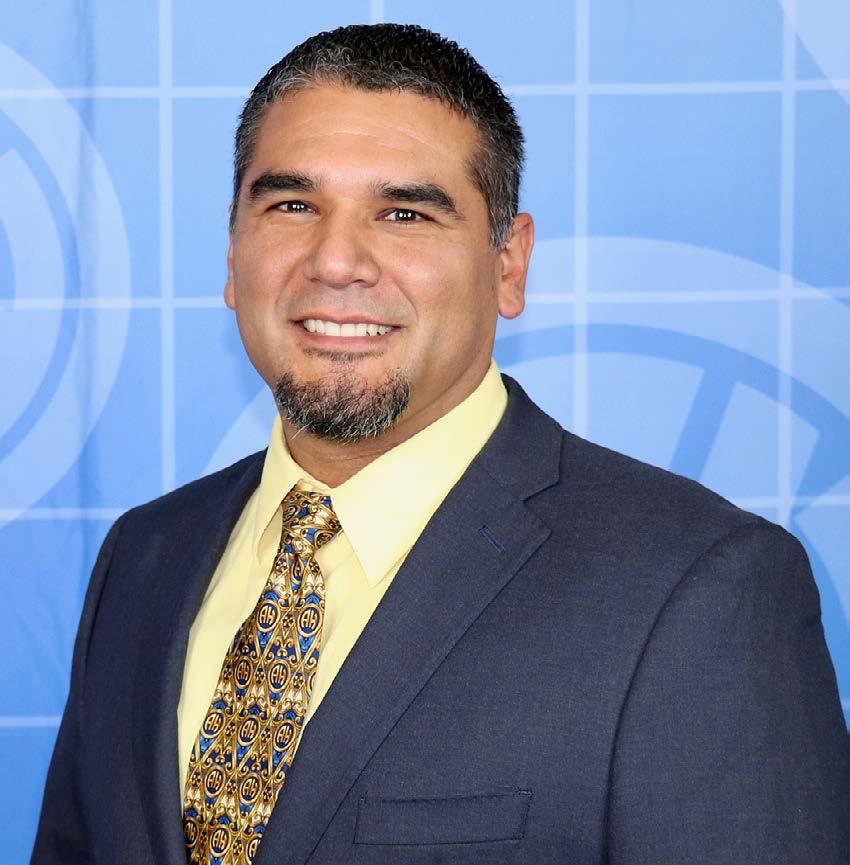
For more information and updates, please visit our webiste at taspa.org or call 512-494-9353.
November 30, 2022
Webinar: Create Your Culture: Strategies on onboarding and Development for Retaining Talent Zoom
December 5, 2022 2022 TASPA Personnel Law Conference
Kalahari Hotel, Round Rock, TX
December 5-7, 2022 2022 TASPA Winter Conference Kalahari Hotel, Round Rock, TX


January 11, 2023 Webinar: Discover an Innovative Staffing Solution for your District Zoom
January 24, 2023 Certification Fundamentals Workshop
ESC Region 8
February 8, 2023 Virtual Workshop: Fingerprinting & Service Records Zoom
February 15, 2023 Certification Fundamentals Workshop
February 28, 2023
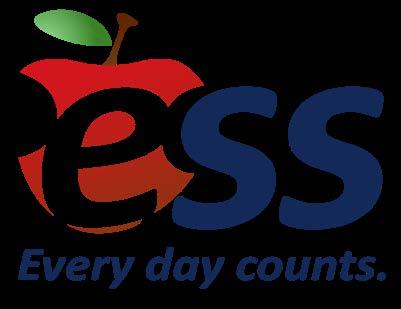

ESC Region 15

Webinar: Teacher Expression in the Classroom Zoom



Paige Acevedo
Coordinator of Recruiting & Retention Carrollton-Farmers Branch ISD
Connie Almaraz HR Clerk Schertz-Cibolo-Universal City ISD
Dominique Ameigh Coordinator of Benefits/Risk Mngmt Dickinson ISD
Christopher Anderson Human Resource Specialist Pflugerville ISD
Yemina Avalos Personal Services Specialist Sheldon ISD
Alice Baker HR Operations Specialist Killeen ISD
Leigh Barrera Personnel Specialist Eagle Mountain-Saginaw ISD
Jennifer Bestian HT Coordinator Tomball ISD
Kyalla Bowens
Director of Talent Acquisition Crandall ISD
Amanda Caballero District Receptionist Elgin ISD
Nate Compton HS Principal Lone Oak ISD
Wayne Callaway
Director or Human ResourcesFarmersville ISD
Kara Carter HR Clerk
Schertz-Cibolo-Universal City ISD
Michelle Castro Coordinator of Human Resources San Angelo ISD
Abi Compton Personnel Specialist Eagle Mountain-Saginaw ISD
Stephanie Corbell
Director of HR and Communications Danbury ISD
Melissa Crane
Coordinator for Human Resources Little Elm ISD
Angela Gonzalez
Chief Human Resources Officer Socorro ISD
Daisy De La Fuente Certification Specialist Dallas ISD
Angela Donovan HR Coord for Recruitment/Retention Killeen ISD
Lorenzo Elias
Public Information Specialist United ISD
Kelley Farr Substitute Specialist Hurst-Euless-Bedford ISD
Meghan Fester HR Specialist Huntsville ISD
Jim Howard Facilities Supervisor Eagle Mountain Saginaw ISD
Bobby Fryar Secondary Principal Sterling City ISD
Amber Galloway Personnel Specialist Eagle Mountain-Saginaw ISD
Lucia Gomez Substitute Coordinator Canutillo ISD
Stacia Graves
Talent Acquisition Coordinator Castleberry ISD
Simon Guerrero Asst Principal Abilene ISD
Patricia Gutierrez Program Coordinator-Substitute United ISD
Travis Hall Coordinator for Recruitment/Retention Killeen ISD
Andrea Hendrickson Coordinator Human Resources Plano ISD
Amanda Jackson Elementary Principal Sterling City ISD
Amanda Johnson Director, Support Staffing and Employee Relations Round Rock ISD
Leah Jones HR Specialist Floresville ISD
Viviana Killion Senior Director for Compensation Galena Park ISD
Caleb Leath Principal Denton ISD
Brian Lee Director of Human Talent Tomball ISD
Gloria Lopez Leave and Benefits Coordinator Pflugerville ISD
Scott Macdonald Vice President eFMLA, Inc.
David Manley Assistant Superintendent of HR Killeen ISD
Donain Martinez Director of Human Resources Nacogdoches ISD
Shalona McCray
Chief Human Resources Officer Longview ISD
Maria Melendez Heath Benefits Specialist Ector County ISD
Sofia Morones Risk Benefits Manager Carrizo Springs CISD
Rebekah Morrison
Human Resource Specialist Rockdale ISD
James Quiram
Director of Human Capital Manor ISD
Cindia Rangel Certification Specialist Dallas ISD
Belinda Reding Coordinator of Human Resources Whitehouse ISD
Alicia Reeves
Human Talent Officer Tomball ISD
Reanna Robinson HR Specialist San Marcos CISD
Gloria Rodriguez HR Administrator Laredo ISD
Lynndee Rogers Admin Assistant to Chief of Staff Crandall ISD
Gaye Rosser Director of Human Capital Hutto ISD
Ramiro Santos
Leaves and Absence Coordinator United ISD
Michael Skinner Assistant Superintendent Hitchcock ISD
Angela Smith Admin. Assistant to Personnel Dayton ISD
Kelsey
HR Specailist Weatherford ISD
Kimberley Sullivan Data Integration Administrator Lewisville ISD
LaTonia Sutton
HR Director San Angelo ISD
Estela Vejil Risk Benefits Manager Ector County ISD
Irma Velarde
Employee Relations Coordinator United ISD
Dawn Walker Deputy Chief Dallas ISD
Brian Williams
Director of Admin Svcs Palacios ISD
Leah Zavala
Teach Denton Coordinator Denton ISD
Stephanie Zelenak Educational Consultant lead4ward
Christine Zenteno
HR and Compensation Consultant TASB HR Services


Districts across the State are not only facing teacher shortages, but they are struggling with auxillary staff shortages as well. Frenship ISD is located in the Lubbock area, and according to their district website, is “designated as one of the fast-growing school districts in Texas, Frenship’s enrollment grows approximately 2-5% each year. Today, approximately 1,300 Frenship staff members serve more than 11,100 students across 14 campuses in the Wolfforth and Lubbock communities.”
Heath Simpson, Frenship ISD Director is Human Resources, states “this past spring we found ourselves short around 20 custodians. We normally employ around 83, so this really put is in a bind since we were beginning our summer cleaning and waxing.

To help lighten the load on our auxiliary staff, we hired a crew of High School students to remove the furniture from the classrooms while our custodial crew cleaned the rooms and waxed the floors. When the rooms were finished, the high school students would come back through and move the classroom furniture back. Having 14 campuses, this helped us stay on schedule but also kept our custodial injuries down.”
simpson goes on to say, “as we got ready to kick off the school year in August, we were still short around 20 custodians and needed to find a creative way to recruit and retain our staff as we began the year. So, we came up with a Recruitment and Retention bonus.”
During our face-to-face meeting held with all auxiliary staff at the beginning of the year, Frenship ISD created a flyer, passed it out, and explained how employees could earn an extra $100.
• If someone came in, interviewed, and said that they were recruited by a current staff member, we would add that staff member to a spreadsheet (only if hired).
• If we hired that person and if they were employed for 90 days, then the staff member that recruited them would earn a $100 bonus.
• This is a onetime bonus for new employees. If they work 90 days, then leave and try to come back, then they are not eligible for the bonus again.
• After the 90 days is up, someone in the auxiliary office will complete a form to document that the 90 days is up.
• This form will notify HR and the Business office that someone has completed their 90 days of employment and a $100 bonus needs to be awarded.
Over the next couple of weeks, Frenship ISD had a rush of new applicants and quickly became full staffed. They currently have 14 staff members waiting on this recruitment bonus and some of the staff members will receive multiple bonuses. The first round of bonuses will be awarded late in late November.
If this continues to be successful, then Frendship ISD plans to to visit with others in the district and try to apply this to their teachers and support staff.
TASPA appreciates Frenship ISD for sharing their strategies. If you would like to include strategies your district is employing, please contact Chandelle Crane.
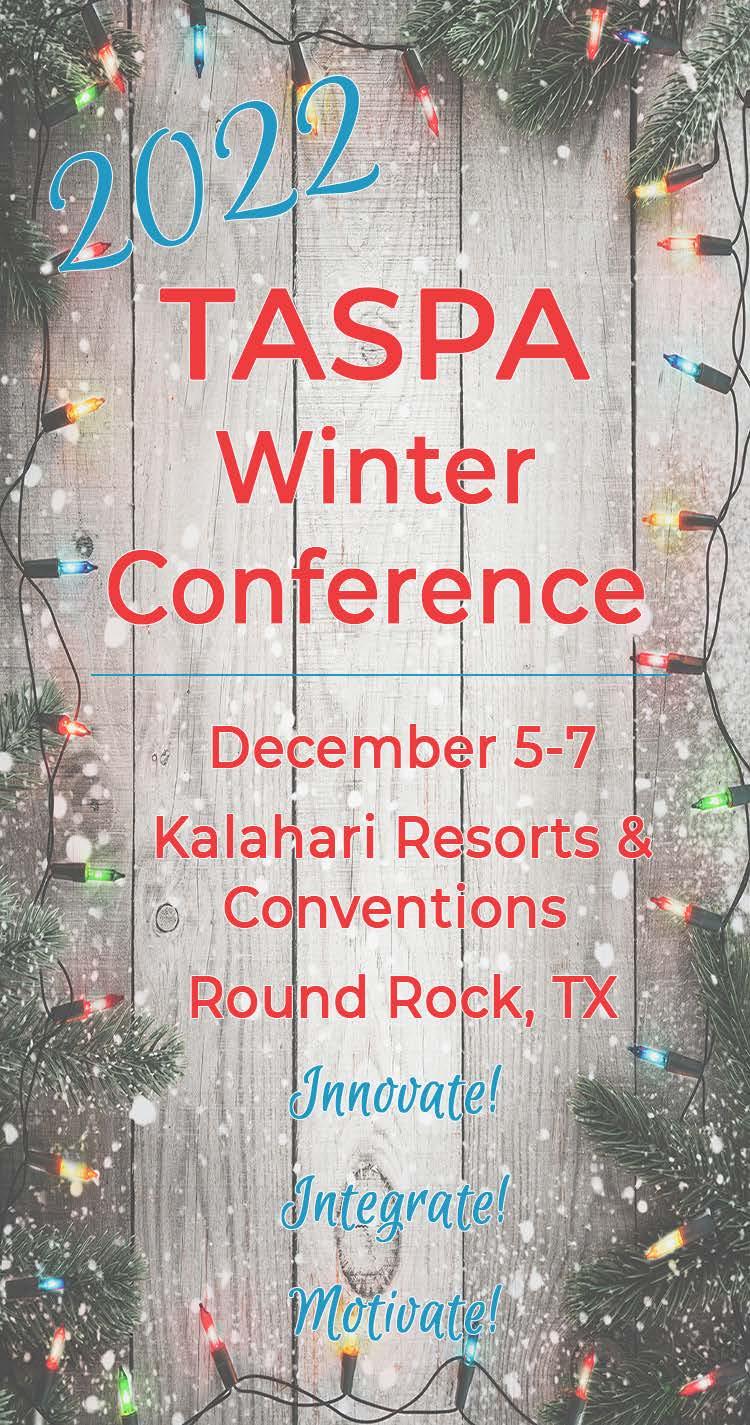

The Americans with Disabilities Act was passed in 1990 and signed into law by George H.W. Bush. Because Congress thought courts were construing the law too narrowly, in 2008, they passed the ADA Amendments Act of 2008 (“ADAAA”), which was dubbed, “An Act to restore the intent and protections of the Americans with Disabilities Act of 1990.” The law became effective January 1, 2009. Then, in 2011, the EEOC issued Final Regulations that added examples of “major life activities,” defined “substantial limitation,” and added rules of construction. The bottom line of all of this is that now, almost everyone can be considered disabled! And Congress has said we should focus on accommodations – not on whether the employee is disabled.

So, it is key for HR professionals to know how to recognize and respond to requests for accommodation. Several points of note are that requests can come at any phase in the employment process; need not be in writing; can be made by someone else on the employee’s behalf; and no “magic words” are required. Requests for accommodations must simply provide sufficient information to let the employer know that the employee is having difficulty performing their job because of an impairment which may constitute a disability.
Once you have received a request, follow this 12-step program for responding to requests for accommodation.
Check Policies/Procedures. DAA (LEGAL) prohibits discrimination.
DAA (LOCAL) does not significantly expound on that policy. That leaves administrative regulations and internal practice and procedures to guide you. Don’t let that practice be haphazard!
Ensure that you have a procedure for handling requests for accommodations from start to finish, including obtaining or developing forms to use. Also ensure that you have procedures in place to keep medical information confidential and train supervisors about this requirement.
Provide Training. Ensure that supervisors are trained to recognize requests for accommodation and forward them to HR like a hot potato.
Review job descriptions (or create them). Job descriptions must: include all aspects of the job; include job qualifications; include
physical requirements, e.g., standing, sitting for long periods, or lifting; and delineate essential functions (vs. marginal functions).
In identifying essential functions, keep the following in mind:
• A job function is essential if the job exists to perform that function.
• A job function might be essential if:
o The employee spends a significant amount of time performing it
o The duties cannot be reassigned to another employee without changing the fundamental nature of the job
• A job function is not essential if:
o The employee never or rarely actually performs it
A written job description can be great evidence of essential functions, but it will not trump reality if challenged!!!
Have the employee complete an Employee Accommodation Request form. Determine what information you need. If both the disability and need for accommodation are obvious, you will not need much.
Initiate the interactive process to clarify what the individual needs and identify appropriate reasonable accommodations. During the process the employee, health care provider, and employer share information about the nature of the disability and limitations that may affect the ability to perform essential job duties. Initiate the interactive process by confirming receipt of a request for accommodation in writing and informing the employee what information you need to make a determination.
There are two options for obtaining medical information. One option is to obtain a medical release from the employee to communicate directly with the healthcare provider and then send a health care provider statement to the health care provider with a letter. Include the job description and the medical release signed by employee. Another option is to give the employee the statement form and
have him/her take it to the provider with the job description. If at first you don’t succeed . . . keep going back and forth with employee and/or provider until you have adequate information.
If the employee’s treating physician provides inadequate information, you can require the employee to go to a doctor of the employer’s choice after giving the employee an opportunity to cure.
There are guidelines as to what medical information can be requested and when. Employers may make inquiries or require medical examinations necessary to the interactive process. They may require a medical examination to: determine disability; extent of limitation; and identify possible accommodations. In this situation employers may ask for reasonable documentation about: the nature, severity, and duration of the impairment; the activity or activities that the impairment limits; the extent to which the impairment limits the employee’s ability to perform the activity or activities. However, keep in mind that the information requested must be limited to the disability for which the employee has requested an accommodation.
Aside from when employees request accommodation, whether medical information can be sought depends on the stage in the employment process. There are three stages: pre-offer; post-offer; and during employment.
At the pre-offer stage, all inquiries and exams are prohibited even if they are related to the job. Note that this includes current employees who apply for a new job.
Post-offer means after an applicant has been given a conditional job offer but before the employee starts work. At the post-offer stage, the employer may make disability-related inquiries and conduct medical examinations regardless of whether they are related to the job as long you do so for all entering employees in the same job category
After employment begins, employers may make disability-related inquiries and require medical examinations only if it is job-related and consistent with business necessity. Job-related and consistent with business necessity includes when an employer has a reasonable belief, based on objective evidence, that: an employee’s ability to perform essential job functions will be impaired by a medical condition; or an employee will pose a direct threat due to a medical condition.
Medical information must be kept in separate confidential file. You must keep information confidential except that you may share such information with supervisors, managers, first aid and safety personnel, and government officials investigating compliance with the ADA.
Even though I said we’re not supposed to focus on whether an employee has a disability, there may be situations where there is no documented disability. Review the paperwork from the health care provider and see if it supports a disability and need for accommodations.
Have sit-down face-to- face meetings with the employee to discuss the documentation and possible accommodations. Take notes. Create a dialogue.
A reasonable accommodation is a modification or adjustment to the application process that enables qualified applicants with a disability to be considered for the position to the work environment, or the way things usually are done that enables a qualified individual with a disability to perform the essential functions of the position and enjoy equal benefits and privileges.
You do not have to provide the employee the exact accommodation he/she requests, but it must be an effective accommodation. Accommodations may include:
• making existing facilities accessible;
• job restructuring, including part-time or modified work schedules;
• acquiring or modifying equipment;
• changing tests, training materials, or policies;
• providing readers or interpreters;
• reassignment to a vacant position;
• leave.
Also keep in mind you must provide reasonable accommodation that is needed to deal with side effects of medication or treatment related to an employee’s disability.
Job restructuring may require elimination of marginal functions, but you’re not required to eliminate
essential functions. You may require the employee to take on other marginal functions he or she can perform. This may require exchanging assignments with other employees. You also may be required to alter when and how a function, either marginal or essential, is performed.
You may be required to permit the use of additional leave as a form of reasonable accommodation. The EEOC says additional unpaid leave = reasonable accommodation. But, open-ended leave with no return to work specified is not reasonable.
Reassignment is sometimes considered the accommodation of last resort. It is important to know that creating a new position is not required, but reassignment to a vacant position may be a reasonable accommodation. If the employee is reassigned to a lower position, you do not need to maintain the higher salary unless past practice indicates it is done that way for others. There is a split of authorities about whether the employee must compete for the vacant position. The conservative (most risk-averse) position is not to require the disabled employee to be most qualified before you will give the position; just require that the employee be qualified for the position. Note that the EEOC says that an employer has a duty to tell a disabled employee about a vacant position if they are qualified. In other words, you shouldn’t just say “apply for any position for which you think you’re qualified.”
There are certain things employers are not required to do as reasonable accommodations: remove essential functions; create a job; change a person’s supervisor; or withhold discipline.
The following are some resources for ideas on reasonable accommodations:
• Job Accommodation Network: http://www.jan. wvu.edu/media/atoz.htm
• Office of Disability Employment Policy: HTTP:// ww.dol.gov/odep/
• The Disability and Business Technical Assistance Center: http://www.adata.org/
“Undue hardship” means significant difficulty or expense. The analysis focuses on the resources and circumstances of the particular employer in relationship to the cost or difficulty of providing a
specific accommodation. Undue hardship involves not only financial difficulty. It also applies to reasonable accommodations that are unduly extensive, substantial, disruptive, or that would fundamentally alter the nature or operation of the business. However, undue hardship cannot be based on a cost-benefit analysis. Indeed, often, the accommodation will be something for which its cost exceeds its benefit to the organization. Also, note that you are expected to look for outside sources of funding. Undue hardship cannot be based on the fact that it will hurt employee morale, nor can it be based on employees’, parents’, or students’ fears or preferences.
“Direct Threat of Harm” means a significant risk of substantial harm to the health or safety of the individual or others that cannot be eliminated or reduced by reasonable accommodation. This analysis requires an individualized assessment of the employee’s present ability to safely perform the essential functions of the job. It is important to consider reasonable medical judgment relying on the most current medical knowledge and/or best available objective evidence. Consider the following factors: the duration of the risk; the nature and severity of the potential harm; the likelihood that potential harm will occur; and the imminence of the potential harm.
At this phase you want to think creatively and suggest multiple accommodations. Try not to leave any stones unturned. Also, it is important to keep good documentation of these discussions.
Document the decision on accommodation and notify the employee. If granting, include details of the accommodation and anticipated start date. If denying, be aware that denying a reasonable accommodation can be costly. For example, in 2010, a Wisconsin jury awarded a teacher with seasonal affective disorder $2 million because the district failed to accommodate her disability, including by failing to provide her with a classroom with windows. Ekstrand v. School Dist. Of Somerset, No. 08-cv-193-bbc (W.D. Wis. Oct. 5, 2010).
Note the date of implementation. Notify supervisors, managers, and first aid and safety personnel. Sometimes you or the supervisor will get questions about why a certain employee is getting “special
treatment.” Of course, you can’t respond by disclosing that the “special treatment” is because of a disability. Instead, you should emphasize that the district has a policy of assisting any employee who encounters difficulties in the workplace. Point out that many issues are personal and it is your policy to respect employee privacy. Reassure employee that his/her privacy would also be respected if s/he found it necessary to ask the employer for some kind of workplace change for personal reasons.

An accommodation, once made, is not set in stone. If it is ineffective, you need to return to the interactive process. Also, the accommodation may need to change if the disability changes or the needs of the district change.
STEP 12: PRAY OR CROSS YOUR FINGERS!!






Teacher staffing issues are a sobering reality for many, if not most, schools these days. “The Great Resignation” is a national phenomenon and neither Texas, nor the teaching profession is immune. In fact, a 2022 Texas Teacher Poll conducted by the Charles Butt Foundation found that 77% of teachers have seriously considered leaving the profession and up to 19% of those respondents anticipate doing so in the next two years. Considering almost 43,000 Texas teachers retired or resigned in the 2021-2022 school year1, districts should be prepared for continued staff attrition in the future. Given this landscape, teachers, administrators and board members should be aware of the law addressing teacher resignations and familiarize themselves with their district’s legal and local policies, especially since the law regarding the penalty-free resignation date recently changed.
Chapter 21 of the Texas Education Code guarantees certified teachers2 the right to an employment contract. These “Chapter 21 contracts” guarantee a number of rights regarding the terms and conditions of public school employment, such as compensation,


benefits and due process rights. Not only do the contracts serve to protect the employee and the employer, they also grant districts peace of mind that the particular contract position has been filled. Because a teacher resignation in the middle of—or too close to the start of—the school year creates staffing complications, the law establishes parameters around when a teacher can resign without penalty, and provides for potential penalties if the resignation is untimely.
An educator employed under a probationary, term or continuing contract may resign effective at the end of the school year without penalty by filing a written resignation with the district’s board or the board’s designee not later than the 45th day before the first day of instruction of the following school year. 3 This right exists even if the teacher is in the middle of a multi-year or continuing contract. If an end-of-year resignation is filed or mailed by certified or registered mail by the 45th day before instruction begins, the board or its designee is not required to accept or otherwise act upon it—the resignation is automatically effective when filed.4 Conversely, that also means
1 According to a KXAN Report by Kelly Wiley based on TEA data.
2 Generally principals, classroom teachers, school counselors, nurses and others required by Ch. 21 to be certified.
3 TEC, §§21.105(a), 21.160(a), or 21.210(a)
if a resignation is timely filed, the educator cannot withdraw it without district approval. Fantroy v. Dallas Indep. Sch. Dist., Comm’r Educ. Decision 034-R8-0206 (Mar. 5, 2009).
Timing is everything, however. If a teacher, without board consent, submits a resignation intended to be effective mid-year or submits it after the fortyfive day window has closed (usually around July 4th depending on the school start date), the law allows— but does not require—districts to report the teacher to the State Board for Educator Certification (SBEC).5 Interestingly, despite the large number of resignations in recent years, the number of complaints filed is not particularly excessive. According to the Texas Education Agency, in the 2019-20 school year, 345 complaints were filed, 258 the next year, 506 in the 2021-2022 school year, and this year, SBEC has received 254 so far.
Once a complaint is filed, SBEC can impose sanctions against the teacher if he or she 1) resigned, 2) failed without good cause to comply with the 45-day or board consent requirement, and 3) failed to perform their contract. 6 This law has been in effect for quite some time, but recent amendments have changed the process by, among other things, allowing SBEC more flexibility regarding imposition of sanctions and ensuring teachers receive notice of any complaint or action on their certificate. 7
In order for SBEC to pursue sanctions against a teacher for contract abandonment, the district’s board of trustees must submit a written complaint within 30 calendar days after the effective date of the educator’s separation from employment.8 The written complaint must include the educator’s resignation letter, if any; any agreement with the educator regarding the effective date of separation from employment, if any; the educator’s contract; and the school board meeting minutes indicating a finding of “no good cause”.9 If the board does not meet within 30 calendar days of the educator’s separation from employment, the minutes may be submitted within 10 calendar days after the next board meeting.10 Unless the school district and the educator have a
5 TEC, §§21.105(c), 21.160(c), or 21.210(c)
6 Id.
written agreement to the contrary, the effective date of separation from employment is considered the first day that, without district permission, the educator failed to appear for work under the contract.
The written complaint must indicate that the board rendered a finding that good cause did not exist for the untimely resignation. While the board’s finding constitutes prima facie evidence of the educator’s lack of good cause, it may be overturned by SBEC.11 Good cause is defined by SBEC rules.12 Specifically, good cause includes a serious illness or health condition of the teacher or a close family member, relocation of a spouse or partner, and a significant change in family needs that requires relocation or more of the educator’s time.13 Take note of one additional reason added by the recent SBEC amendments: the educator’s reasonable belief that he or she had written permission from the school district administration to resign.14 Accordingly, districts should carefully communicate with administrators about the resignation process, identifying who in the district is authorized to accept a resignation and describing how to avoid taking actions that could be interpreted as encouraging or permitting resignation.
When considering a contract abandonment complaint, SBEC must consider “any mitigating factors relevant to the teacher’s conduct” prior to imposing a sanction.15 Mitigating factors include whether the teacher:
• Helped find a replacement/worked until the replacement was found;
• Assisted in training the replacement/provided lesson plans following resignation;
• Showed good faith in communications with the district;
• Gave written notice to the school district 30 days or more in advance of the first day of instruction for which the educator will not be present;
• Changed careers within the field of education to a position that required a different class of certification or to a position with a higher level of authority within the principal class of certificate
7 See, generally, Acts 2021, 87th Leg., ch. 1030 (H.B. 2519), effective Sept. 1, 2021
8 19 TAC § 249.14(j)
9 Id.
10 Id.
11 Id.
12 19 TAC § 249.17(d)(1)
13 Id.
14 Id.
15 TEC, §§ 21.105(e), 21.160(e), or 21.210(e)
• Had a reduction in base pay, excluding stipends, as compared to the educator’s base pay for the prior year at the same school district;
• Resigned due to working conditions that reasonably posed an immediate threat of significant physical harm to the educator; or
• Any other relevant circumstances or facts.16
Prior to the 2021 change in law and the 2022 revision of SBEC rules, SBEC required a mandatory minimum sanction of a one year suspension for any educator who resigned within 45 days of the start of school without good cause or mitigating factors. SBEC could—but was not required to—consider mitigating factors. Now, consideration of those factors is mandatory and could lead to a suspended sanction, or to no sanction or disciplinary action at all.17
Another amendment that lessens the severity of this law prohibits SBEC from suspending or revoking a certificate if the written resignation is submitted not later than the 30th day before the first day of instruction.18 If there are no mitigating factors in such a case, the mandatory sanction is an inscribed reprimand and therefore does not prevent the educator from working in a school district. On the other hand, if the educator resigns with less than 30 days before the first day of instruction, the mandatory minimum sanction is a one year suspension.19 The timing of when the suspension starts depends on the circumstances. If the educator has not worked as an educator during that year and the case is resolved within that one year through an agreed final order, the suspension is timed from the first day the educator failed to appear for work.20 Alternatively, the suspension can run for one year from either the effective date of an agreed final order resolving the case or an agreed future date at the beginning of the following school year, if the educator has worked as an educator after abandoning the contract.21 This is especially helpful for districts that have unwittingly hired a teacher who is the subject of a pending abandonment complaint. Note, however, that the teacher must agree to settle in order for a future date to apply. For teachers who do not settle
16 19 TAC § 249.17(d)(2))
17 19 TAC § 249.17(d)(3)(C)
18 TEC, §§ 21.105(f), 21.160(f), or 21.210(f); 19 TAC § 249.17(d)(3)(A)
19 19 TAC § 249.17(d)(3)
20 Id.
21 Id.
22 Id.
23 19 TAC § 249.15(a)
24 TEC, §§ 21.105(e), 21.160(e), or 21.210(e)
with SBEC, the suspension generally runs for one year from the date that SBEC adopts an order that becomes final following a default or a contested case hearing at the State Office of Administrative Hearings.22
Depending upon whether mitigating factors apply or an educator’s actions were egregious enough to warrant more than a minimum mandatory sanction, SBEC has a number of options for sanctioning an educator who resigns outside of the penalty-free resignation date.23 They include:

• Inscribed or non-inscribed reprimand;
• Suspension of certificate;
• Restrictions on the issuance, renewal or holding of a certificate for a set term or indefinitely;
• Revocation/cancellation of a certificate;
• Other conditions/restrictions deemed necessary to “facilitate rehabilitation or professional development” (continuing education, etc.)
SBEC enjoys a great deal of flexibility when addressing contract abandonment, since the recent statutory amendment allows SBEC to consider alternatives to sanctions altogether, such as requiring additional continuing education or training.24 Given the changes in law, administrators should familiarize themselves with policy revisions and ensure that all district procedures, including employee handbooks and links that allow teachers to submit resignations online, are in harmony with the changes. In order to avoid losing a teacher mid-year due to a suspended certification, individuals making hiring decisions should be sure not only to ask applicants whether they are currently involved in a contract abandonment case with SBEC, but also whether they have abandoned a contract in case the educator has not been notified yet of a complaint having been filed. Finally, any certified teacher considering resigning should be aware that in the eyes of the law, there’s a right time and a wrong time to do so.


• Since 2018, Teachers of Tomorrow has placed 29,000 new hires in Texas classrooms across more than 1,220 Districts
• Diverse ethnic, socio-economic and experienced teachers to classrooms, including 60% non-white candidates (based on 2018 Title II data)
• 2022 applicants reflect unique diversity with 27% holding post-graduate degrees and 500% increase in recent college graduates (since 2018)


• 70% Retention rate after 5 years versus state average of 67% (and national average of 50%)
Teachers of Tomorrow’s mission is to make a lasting impact on our children and communities by being the nation’s leader in developing quality educators. We bring districts more choices to help them find the right teacher for the classroom. Our program offers teacher candidates affordable access to a highly supportive certification route and over 300 hours of comprehensive training coursework. Teachers of Tomorrow is committed to facilitating successful relationships between the teacher, student, and district.
“One of my favorite things about Teachers of Tomorrow is the support you receive throughout the program. I have an abundance of online resources in addition to a mentor once I’m in the classroom.”
Amber S. A teacher of today
We should feel confident sending our kids to school, and know they are receiving a quality education from skilled teachers. As affiliates of the education industry, it’s time we come together to create meaningful solutions to the teacher shortage. Distinguished teachers can be produced through various tracks as long as they feel supported and have access to resources. It is up to us to ensure they have that access.
Many Texas school districts have recognized this need and partnered with Alternative Certification Programs to ensure individuals can pursue their goals of teaching in classrooms. Some districts have created their own Alternative Certification Programs to get teachers in classrooms while others are offering to subsidize certification fees.
As the teaching industry evolves, so will solutions. Alternative Certification Programs give graduates who didn’t major in education a path to the classroom without having to complete an additional four-year degree program. They offer an opportunity for individuals with knowledge from different fields to join the field of teaching, providing a diverse perspective in the classroom.

Texas Teachers of Tomorrow invites you to help us elevate the teaching profession as we recruit and retain teachers through quality support and programming. Partner with us to develop a path forward and fill your teacher vacancies with our qualified candidates by sending an email to TheList@TexasTeachers.org. We look forward to serving your needs!


Missing a few hairs on your head? You might be spending time pulling out your hair dealing with a temperamental printer.
Relentless compliance deadlines can induce brain fog.
Struggling to recruit for open positions may lead to a heavy heart.
Work-life balance might feel out of reach — an ever-increasing workload induces a feeling of walking along an endless tight rope.
Thanks to late nights at the office and early mornings, administrators rarely get the recommended 8 hours of sleep — and wake up feeling like they have bags under their eyes.
Aches and pains pop up due to the physical strain of lugging around heavy piles of paper.
Endless manual data entry induces soreness in fingers and hands.
Constant dull aches in the pit of your stomach are common when every season brings a fresh set of challenges.





Teachworthy candidates enter the classroom ready to engage, connect, and inspire student success. Powered

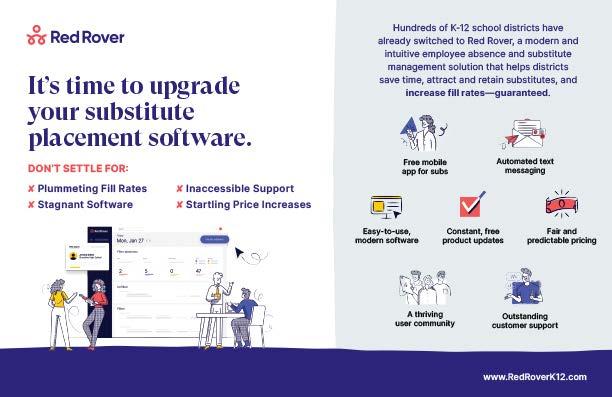


All candidates attend Capturing Kids’ Hearts® - 1 training to learn how to build self-managing, high-performing classrooms.

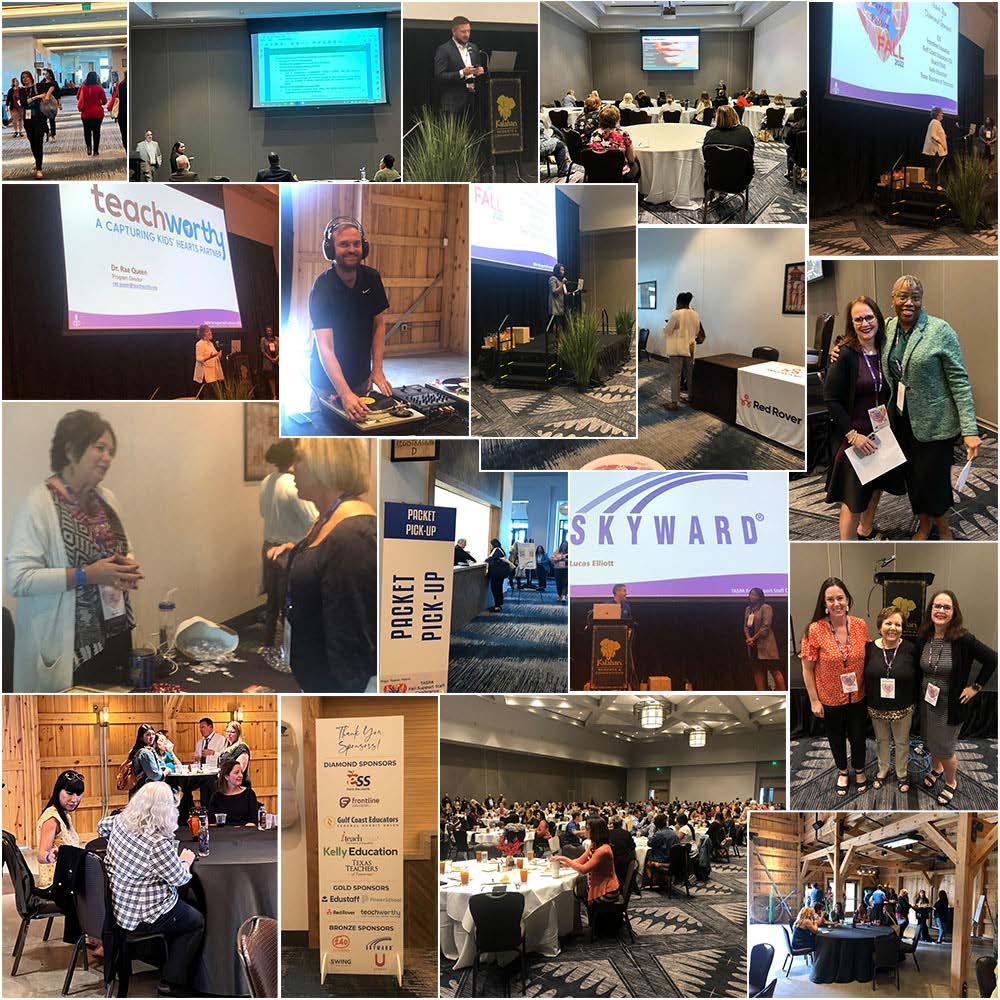
The TASPA 2022 Fall Support Staff Conference was held on October 3-4 at the Kalahari Hotel & Convention Center in Round Rock, TX. We had 188 attendees attend the Fall Conference.
During the two day conference, TASPA was able to host four general sessions and 24 breakout sessions. We had over 35 speakers that included law firms: Eichelbaum Wardell Hansen Powell & Muñoz, P.C.; J. Cruz & Associates, LLC; Abernathy, Roeder, Boyd & Hullett, P.C.; Rogers Grover & Morris; Ogletree Deakins; and Escamilla & Poneck, LLP.
We also had presentations from TEA, TRS, TASB HR Services, TX DPS and many others. Thank you to speakers, TASPA board members, TASPA staff and TASPA members to help make this conference a huge success!
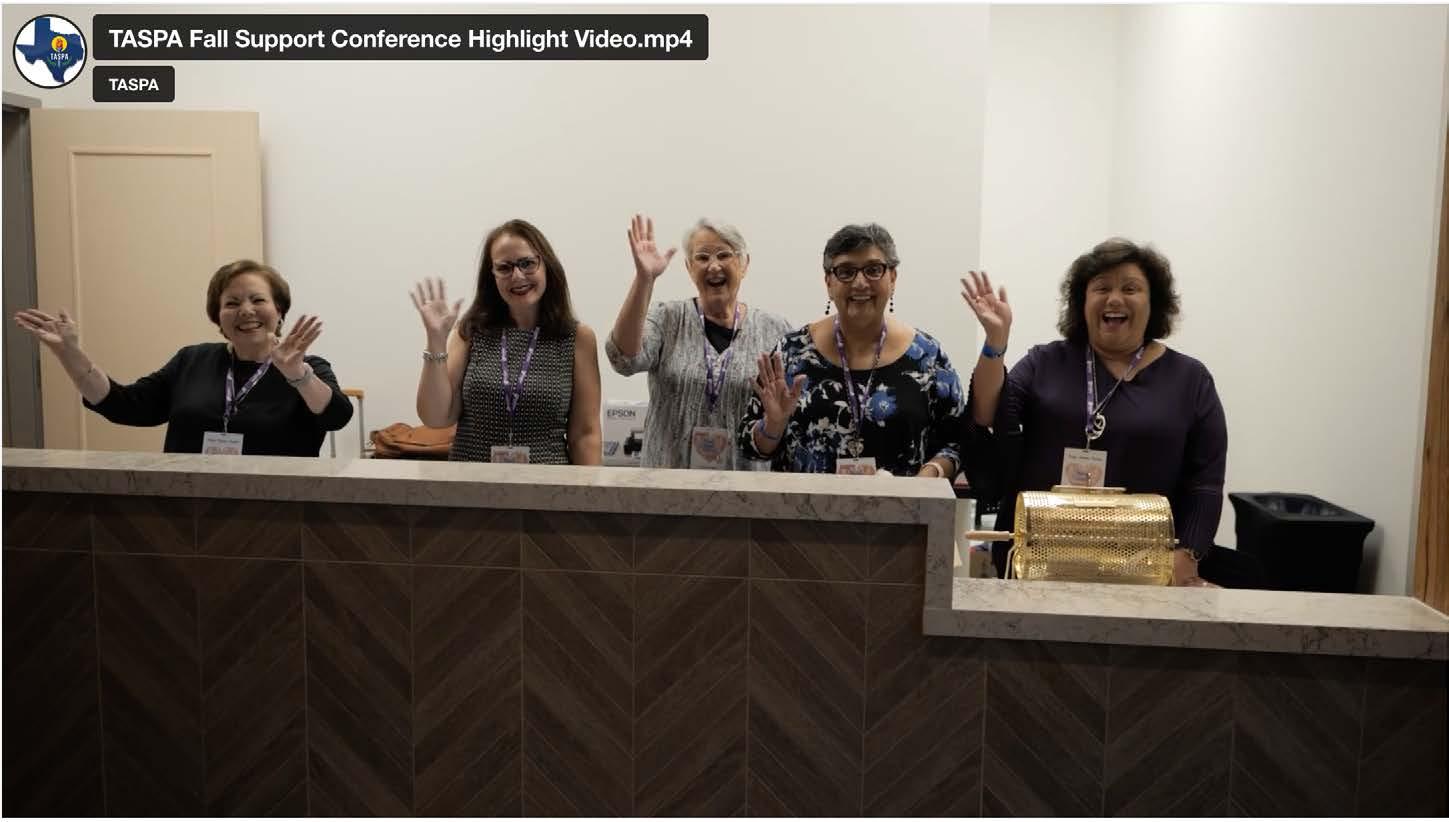
Our Job Alike sessions are always a huge success. These sessions provide an opportunity for the attendees to gather in smaller groups to collaborate and share ideas. These included: Position Management, Substitute Services, Leave Management, Certification Specialists, General HR Support, and Records Management.
Our two keynote speakers were George Carroll and Hoan Do. We are grateful for their energy led sessions to leave our attendees inspired and strengthened. Hoan Do was gracious enough to provide a video highlight of the conference.
We are especially grateful to our Diamond Sponsors: ESS, Gulf Coast Educators FCU, Frontline, iteachTEXAS, Kelly Education, and Texas Teachers. We would also like to thank the following exhibitors: EduStaff, Red Rover Technologies, Teachworthy, PowerSchool, 240 Tutoring, Skyward, Swing Education, Upbeat, Hill Country Rocks & Silver Creek Collections. With their support we are able to provide YOU, our TASPA members, with continued services and professional development.
We hope you will join us for again at the Kalahari for the Winter Conference December 5-7!
Maybe it’s time for a change.
Your substitute teacher program is essential to the success of your schools, staff, and students. That’s why you deserve a substitute management partner willing to do things differently. You deserve ESS.
ESS is Texas’ largest education-exclusive provider of full-service substitute solutions. Contact us today to find out more about how ESS can do things differently in your schools.





Fred Bentsen, Vice President of Business Development
FBentsen@ESS.com | 832.244.5015 | ESS.com